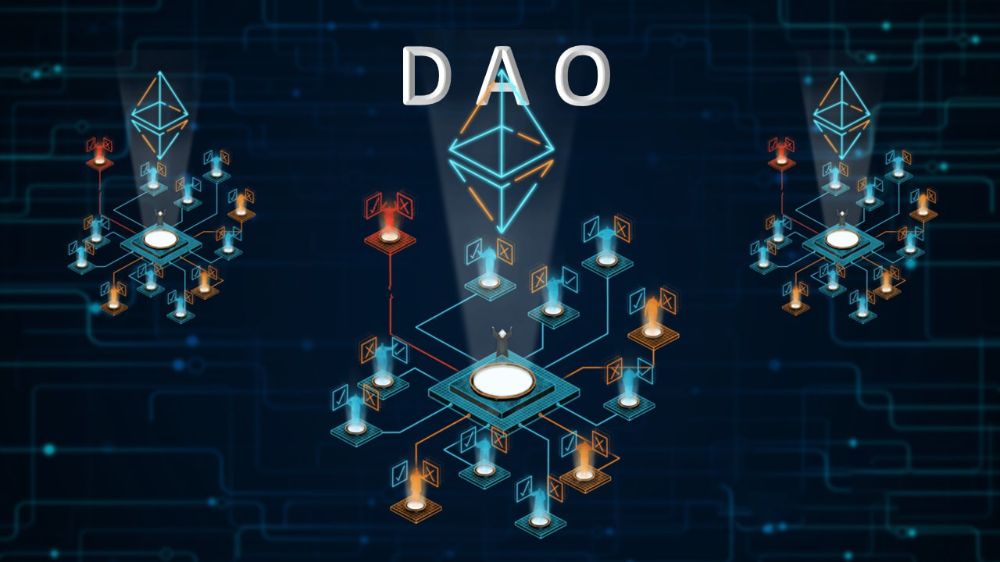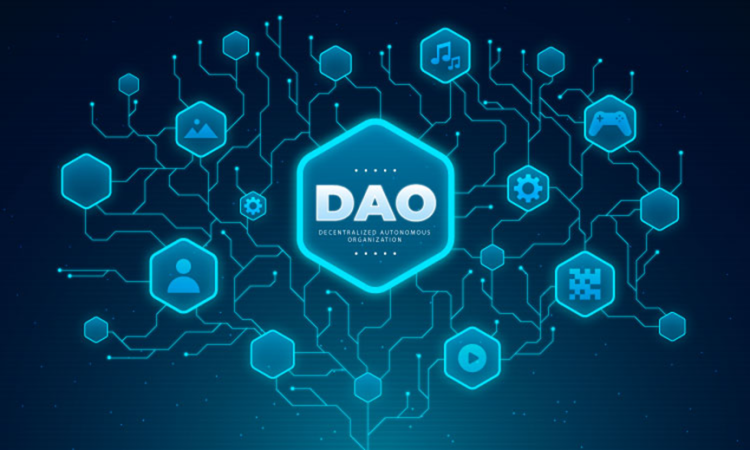Introduction
The rise of Decentralized Autonomous Organizations (DAOs) represents a fundamental shift in how organizations operate. Traditionally, organizations are governed by centralized authorities—boards, executives, or committees—who make decisions for the collective. However, DAOs offer a new paradigm: governance through the collective decision-making of its community, powered by blockchain technology.
One of the key elements that set DAOs apart from traditional organizations is transparency. Every decision, proposal, vote, and outcome is recorded on the blockchain, making the decision-making process verifiable, immutable, and publicly accessible. But the real power of blockchain and DAOs lies in the ability to leverage on-chain data—information recorded directly on the blockchain—to further enhance governance. By analyzing and utilizing on-chain data, DAOs can improve transparency, make decision-making more efficient, and reduce the risk of manipulation or centralization.
This article explores how on-chain data can transform DAO governance, making it not only more transparent but also more efficient. We will discuss the role of on-chain data in decision-making, the tools and metrics available for analysis, and how they can be used to optimize DAO operations.
Section 1: Understanding DAOs and the Importance of Transparency
1.1 What is a DAO?
A Decentralized Autonomous Organization (DAO) is an organization that is governed by rules encoded in smart contracts, rather than by a central authority. The rules are enforced by the blockchain, which makes them transparent and immutable. Instead of relying on a few key decision-makers, DAOs allow token holders to vote on proposals, making it a more democratic system.
- Token-based Governance: DAOs typically use tokens as voting power. The more tokens a participant holds, the more influence they have in governance decisions. However, this system can sometimes concentrate power in the hands of large token holders, creating challenges for true decentralization.
- Proposals and Voting: DAOs often operate based on proposals made by community members. Once a proposal is submitted, token holders vote to approve or reject it. This could be anything from a protocol upgrade to a treasury allocation.
The transparency in a DAO comes from the blockchain’s public ledger, which records every transaction, vote, and decision. However, while transparency is a core strength, the sheer volume of data can sometimes overwhelm participants. This is where on-chain data analysis can play a critical role.
1.2 Why is Transparency Crucial for DAOs?
Transparency is essential for DAOs for several reasons:
- Accountability: Blockchain ensures that all decisions and voting results are visible to everyone, holding participants accountable for their actions.
- Trust: With every transaction recorded on the blockchain, members of the DAO can verify outcomes independently, fostering a sense of trust among stakeholders.
- Participation: Transparency encourages more participation from token holders, as they can see the impact of their votes and understand the rationale behind decisions.
Without transparency, it would be impossible to trust the governance of the DAO, and without trust, a DAO could quickly devolve into a centralized entity despite its claims of decentralization.
Section 2: The Role of On-Chain Data in DAO Decision-Making
2.1 What is On-Chain Data?
On-chain data refers to the information that is stored directly on the blockchain. This data includes every transaction, vote, token transfer, contract execution, and proposal outcome. Unlike off-chain data, which can be manipulated or obscured, on-chain data is immutable and publicly accessible. This makes it a valuable resource for analyzing and optimizing DAO governance.
The key types of on-chain data that are relevant to DAOs include:
- Transaction Data: This includes all financial transactions and token movements. For DAOs, it can show how tokens are being allocated, whether funds are being sent to the right places, and whether any large transfers are taking place.
- Voting Data: This includes every vote cast in a DAO’s governance process. It can show how much voting power each participant has, how many people are voting, and what the overall sentiment is.
- Proposal Data: This includes details on the proposals submitted, including their status (whether they are pending, approved, or rejected), the details of the proposal itself, and the voting results.
- Smart Contract Interactions: These interactions show how DAOs are interacting with their smart contracts, including contract upgrades or changes to the protocol.
By analyzing this data, DAOs can improve decision-making efficiency, detect issues early, and ensure that the governance process is not subject to manipulation or centralization.
2.2 Transparency and On-Chain Voting
One of the most powerful ways that on-chain data contributes to transparency is through on-chain voting. Every vote cast in a DAO is recorded directly on the blockchain, making it auditable and verifiable by all stakeholders.
- Auditable Voting Records: On-chain voting ensures that every vote cast by a participant is public and cannot be altered or deleted. This reduces the risk of vote manipulation, vote-buying, or other forms of corruption.
- Immutable Records: Once a vote is cast, it becomes a permanent part of the blockchain’s ledger. This means that the outcome of a proposal can never be disputed, as it is automatically recorded.
- Open Participation: On-chain voting is open to all token holders, giving everyone a chance to participate, regardless of their geographical location. This encourages greater community involvement and ensures that the DAO’s decisions represent the will of the majority.
By leveraging on-chain voting, DAOs can ensure that their decision-making processes are fair, transparent, and reflective of the community’s desires.

Section 3: How On-Chain Data Increases Efficiency in DAO Governance
3.1 Automated Governance via Smart Contracts
The use of smart contracts is a critical aspect of DAOs, as they enable automation of various governance processes. Smart contracts can execute decisions autonomously once a proposal has been approved, reducing the need for manual intervention and minimizing the possibility of human error.
On-chain data can make these processes more efficient in the following ways:
- Instant Execution: Once a proposal is voted on and approved, the smart contract can automatically implement the decision. For example, if a DAO votes to allocate funds to a specific project, the smart contract can immediately transfer the funds to the designated wallet.
- Time-Saving: On-chain execution through smart contracts eliminates the delays typically associated with traditional governance systems, such as waiting for board approval or manual processing of decisions.
- Reducing Administrative Burden: Smart contracts take care of the backend tasks, leaving the community to focus on the more strategic aspects of governance. This results in a more streamlined and effective decision-making process.
3.2 On-Chain Metrics for Data-Driven Decision Making
On-chain data doesn’t just provide transparency; it also empowers DAOs to make more data-driven decisions. By analyzing on-chain metrics, DAOs can better understand their community, market sentiment, and the effectiveness of past decisions. Some key on-chain metrics that contribute to more efficient governance include:
- Proposal Engagement: By tracking how many participants engage with a proposal and how much voting power is being used, DAOs can identify the level of interest and whether proposals are gaining traction or being ignored.
- Token Distribution: Analyzing how tokens are distributed can reveal potential concentration of power in the hands of a few individuals or entities. If a small number of addresses control a significant portion of the tokens, the DAO may want to introduce mechanisms like quadratic voting to ensure fairer representation.
- Voting Participation: By tracking voter turnout, DAOs can assess whether members are actively participating in governance or whether improvements are needed to engage the community.
With these insights, DAOs can make more informed decisions, adjust their strategies, and optimize their governance processes.
3.3 Reducing Voter Apathy and Encouraging Participation
Voter apathy is a common issue in DAOs, as many token holders fail to participate in the voting process. However, on-chain data can provide valuable insights that can help reduce apathy and encourage greater participation. For instance:
- Token Locking and Staking: By analyzing token locking and staking patterns, DAOs can incentivize participants to lock up their tokens for a certain period, thereby increasing the likelihood of engagement during voting periods.
- Incentivizing Voting: DAOs can also use on-chain data to track voter behavior and reward participants who consistently vote on proposals. For example, DAO members who participate in a certain percentage of votes could receive additional tokens or governance rights.
- Highlighting Key Proposals: By analyzing which types of proposals attract the most attention, DAOs can focus on making those proposals more engaging and relevant to their community.
By using on-chain data to understand voter behavior, DAOs can create a more active and engaged community that participates in decision-making.
Section 4: Challenges and Future Potential
4.1 Scalability and Gas Fees
One of the primary challenges of on-chain governance is the cost of transactions. High gas fees, particularly on networks like Ethereum, can discourage participation in voting or governance proposals. This issue is especially relevant for small token holders, as the cost of casting a vote may outweigh the value of the decision being made.
- Layer 2 Solutions: Solutions like Optimism, Arbitrum, and Polygon are designed to reduce transaction costs, making it more affordable to vote on proposals and interact with DAOs.
- Alternative Voting Mechanisms: Some DAOs are adopting off-chain voting mechanisms (like Snapshot), which use off-chain data but still allow for transparent and verifiable results.
4.2 Data Privacy and Security Concerns
While on-chain data offers unprecedented transparency, it also raises concerns about privacy. The public nature of blockchain means that personal and financial information can potentially be exposed. DAOs need to find ways to protect user privacy while maintaining transparency.
- Privacy-Enhanced Protocols: Technologies like zk-SNARKs (zero-knowledge proofs) allow for privacy-preserving transactions on public blockchains. These technologies can help DAOs strike a balance between transparency and privacy.
Conclusion
On-chain data is a powerful tool for enhancing the transparency, accountability, and efficiency of DAO governance. By leveraging blockchain’s immutable records, DAOs can create a more open and democratic decision-making process. Moreover, analyzing on-chain data provides valuable insights that can improve voter participation, reduce centralization, and ensure fairer governance.
As DAOs continue to evolve, the integration of advanced data analysis and privacy solutions will play a key role in optimizing decentralized governance. With the right tools and strategies in place, on-chain data has the potential to revolutionize how decentralized organizations are run, making them not only more transparent but also more effective in achieving their goals.
This concludes the first part of the article. If you’d like me to continue with any additional points or adjust certain aspects of the content, feel free to let me know!

















































